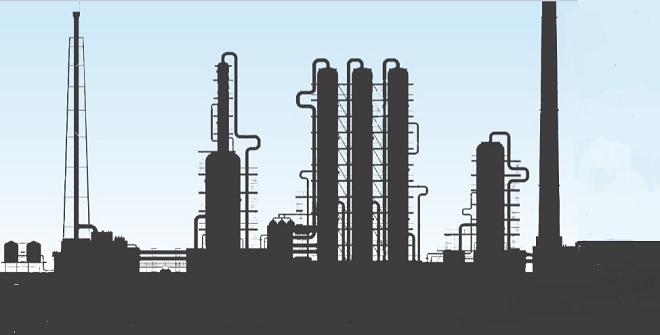
These negotiations could centre on the availability of financing, its cost and government’s ability to guarantee crude for the refinery and the rate of return.
These are the issues that made the American consortium come second to China’s Dong Song.
For instance, the lead investor and equity financier (Intra continental Asset holdings), previously indicated that they will still need to go to the market to raise additional equity and debt finance for the project.
They had also demanded a non-disclosure agreement with the government, which at the time officials feared threatened to delay implementation in case contentious issues emerged during interface with the debt finance partners. This is no longer an issue since Isabalija indicated that the consortium would enjoy exclusivity while negotiating the deal.
The GE consortium also did not agree with the government proposal of building a 60,000 bpd refinery in two phases starting with the 30,000 bpd pointing to the market and viability analysis. Instead, they proposed to construct a refinery with capacity of 50,000 bpd.
As government already indicated, this might be an issue during negotiations as it may have an implication on the volumes of crude oil for export available to upstream companies during the initial stage of production.
Going forward, therefore, the GE team, will have to agree with government on its intended financiers for the debt portion, provide adequate assurance of the availability of a company that will be responsible for operations and maintenance of the refinery, and provide adequate commitments from operations and management partners—issues that were seen as the reason they didn’t come on top.
The GE team will also have to get better financing terms. Previously, they proposed indicative cost of borrowing for debt finance to be in the range of 8%- 12%. Government found this more costly than what the Chinese were offering (4%-8%).
This is a major aspect as “the cost of capital (interest rate) will have a bearing on the project’s rate of return and implies that the Refinery Company (consortium of the lead investor and the Uganda Refinery Holding Company) will assume the risks associated with high interest rates”.
The other issue is the need for sovereign support given the likelihood of the requirement for a sovereign guarantee. Government had noted that this position was not desirable as it can expose the government to risks associated with debt repayment, especially if the consortium is inefficient.
But on this issue, government might have to be flexible especially given that even the Chinese who were scored as the best required one.
The new development comes after the project suffered a blow after disagreements with in the Chinese consortium forced a major player to quit and led to the collapse of their bid. CPECC in June wrote to the government indicating that it had pulled out of the deal.
The departure of CPECC was seen as a major set-back because it is affiliated to China National Petroleum Corporation (CNPC), the world’s third largest oil company, and it is considered the largest company with specialties in oil engineering, manufacturing, construction, and contracting in China.
CPECC was part of a Chinese consortium put together by a well-known and highly connected Chinese group in Uganda; Dongsong Guangzhou Energy Group, that had following a June review emerged the best contender for the refinery project.
That group had beat three others including an American consortium led by Yaatra/ Intra-continental Asset Holdings and including the renowned global manufacturing giant General Electric and Saipem; the Italian oil and gas contractor.
Insiders say the Dongsong win had everything to do with CPECC, which was being fronted as the Engineering, Procurement, and Construction (EPC) contractor or the main contractor in the consortium. Others in the group included China Africa Fund for Industrial Cooperation (CAFIC), Guangzhou Silk Road, East China Design and Engineering Institute, EXIM Bank of China, and Industrial and Commercial Bank of China (ICBC).
The Dongsong win appeared to have ended Museveni’s long and convoluted search for the refinery constructor in the best possible way because it was said to have the money and expertise needed for the US$4 billion job.
“They had the money and the technical capacity to build the project,” an official close to the deal told The Independent, “but they disagreed amongst themselves and the main contractor pulled out.”
All appeared on course for the refinery as it also appeared to have good will from one of the major players in the sector—Total E&P.
Early this year, the French major offered to take a 10 percent stake in the project. 10 percent is easily over US$ 400 million, just $ 100 million shy of the $ 500 million government officials indicated was needed to kick start the project.
Total E&P’s offer was important because it signaled a break from the past when the international oil companies—CNOOC, Total E&P and Tullow—opposed to the refinery. The oil companies were keen on the $3.55 billion pipeline, which hit a milestone with the signing on May 26 of a construction agreement deal between Uganda and Tanzania.
Before picking GE and Dong Song, government was looking at four consortia. Among these was Profundo Technologies Limited of United Kingdom, which had China Overseas Construction, Petrofac and Chimera Corporation.
The Profundo Technologies-led consortium was kicked out over incomplete membership after Chimera Corporation, which was the consortium’s main financier, failed to appear for technical consultations.
Another contender, a Ugandan company, owned by a Canadian company, both owned by a one Eric Byenkya, are also interested in the deal. They petitioned Museveni claiming it had unfairly been locked out of the deal yet it had secured financing and all the right partners but was largely ignored and all the focus remained on the Chinese and Americans.
Uganda’s petroleum products consumption is at 27,000 barrels/day and that for East Africa is close to 200,000 barrels/day growing at an annual rate of about 7%.
The Foster Wheeler study noted that a 60,000 barrels per day refinery was commercially viable with a Net Present Value (NPV) of US$ 3.2 billion at a 10% discount rate and an Internal Rate of Return (IRR) of 33%.
****
 The Independent Uganda: You get the Truth we Pay the Price
The Independent Uganda: You get the Truth we Pay the Price


